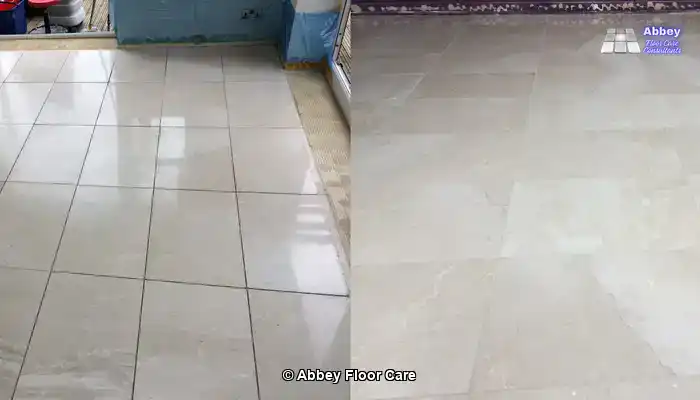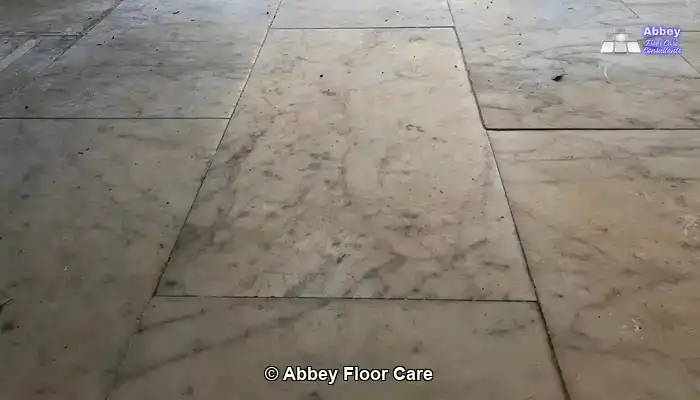Your cart is currently empty!
Restored Marble: How to Achieve a Like-New Shine


Last Updated on November 6, 2025 by David
Can Your Marble Be Restored to Its Original Beauty and Elegance?

Essential Insights for UK Homeowners on Marble Restoration Processes
Marble is renowned for its exquisite elegance and timeless beauty. Nevertheless, over time, this stunning material may lose its original clarity, colour, and shine, which initially made it a popular choice for residential flooring and surfaces. Homeowners often encounter issues such as scratches, dull patches, etch marks, and stains, leading them to wonder if their marble can ever regain its pristine “like new” look. This comprehensive guide delves into what restoration can realistically achieve, its inherent limitations, and the optimal practices for maintaining results over time. Whether you are contending with acid damage, significant wear, or merely a tired surface, acquiring knowledge about the restoration process will empower you to make informed choices regarding your cherished stone.
Decoding the Meaning of “Like New” for Marble Surfaces

Achieving the Original Shine, Clarity, and Color Depth of Your Marble
When homeowners express a desire for their marble to appear “like new,” they are primarily referring to the original shine and clarity—how light interacts with the surface to reveal the natural colour depth of the stone. A successful restoration process can replicate this effect by effectively eliminating surface damage and refining the finish to perfection. The resulting floor presents as vibrant, smooth, and immaculate, often appearing indistinguishable from a newly installed slab of marble, thereby enhancing the overall aesthetic allure of the home significantly.
Distinguishing Between Cosmetic Wear and Serious Structural Damage in Marble
It’s critical to distinguish between cosmetic wear and more severe structural problems when evaluating the condition of your marble. Surface scratches, dullness, and minor etching can typically be repaired through honing and polishing techniques. However, more severe issues such as cracks, chips, and internal discoloration may not completely resolve through these methods. The restoration process enhances both the visual and tactile qualities of the marble, but it does not replace or rebuild the underlying stone. Grasping this distinction is essential for setting realistic expectations and ensuring satisfaction with the ultimate results of the restoration.
Exploring the Boundaries of Marble Restoration: Understanding What Can Be Fixed

Resolving Deep Scratches, Chips, and Acid Etching in Marble
The restoration process is adept at eliminating most surface-level damage, including scratches and mild etching caused by acidic substances like lemon juice or vinegar. These imperfections can dull the finish and compromise the clarity of the stone; however, skilled honing and polishing techniques can usually restore a smooth and reflective surface. Conversely, deeper scratches and significant chips may necessitate grinding or filling methods. While the overall appearance can see marked improvement, some imperfections may remain subtly visible depending on their depth and location on the stone.
Recognizing UV Damage and Internal Discoloration in Marble
Marble exposed to intense sunlight over time can experience fading or yellowing, a concern for many homeowners. Here’s an in-depth overview of why this phenomenon occurs:
UV Ray Damage (Fading): Sunlight, particularly its ultraviolet (UV) rays, can lead to fading of the natural pigments within the stone over time. This photochemical reaction can result in a loss of color, making the marble appear less vibrant or giving it a washed-out look. Certain colors of marble are particularly susceptible to this effect.
-
- Yellowing: White marble yellowing is often linked to prolonged exposure to UV light.
- Iron Oxidation: Many types of white marble contain trace amounts of iron. When exposed to moisture and oxidizing agents (like air or water), the iron can rust, a process accelerated by sunlight and heat, leading to yellow or brown discoloration.
- Surface Degradation: UV rays can also degrade any sealants or resins applied to the marble, causing them to yellow and diminish the surface’s appearance.
While marble is celebrated for its durability, it is more prone to UV-induced changes compared to harder stones like granite or quartzite. This issue is particularly pertinent for marble surfaces used outdoors or in areas receiving significant, direct sunlight (such as a sunny windowsill or near a large, unshaded window).
To safeguard marble, it is often recommended to use:
- UV-resistant sealants
- Shades, blinds, or curtains for indoor installations
- Proper placement to limit direct sun exposure.
The restoration process can enhance the surface aesthetics but cannot reverse color changes that originate beneath the surface.
Before and After Images of Marble Affected by Iron Oxide Stains


In such situations, the focus shifts from attaining a “like new” appearance to creating a cleaner, more uniform finish that minimizes visual distractions, thereby enhancing the overall presentation of the marble.
Understanding the Comprehensive Processes of Honing, Polishing, and Full Marble Restoration
Identifying When Polishing is Sufficient for Marble Restoration
Polishing acts as a surface-level treatment designed to rejuvenate shine by smoothing out fine scratches and enhancing reflectivity. This technique is especially effective for dull marble that is otherwise structurally intact. If the stone has lost its gloss due to wear or light etching, polishing alone may suffice to restore a “like new” appearance. However, this technique does not address deeper flaws or rectify uneven surfaces, making it crucial to evaluate the condition of the marble before proceeding.
Recognizing When Honing or Grinding is Necessary for Marble Surfaces
Honing goes deeper than polishing, removing a thin layer of marble to eliminate scratches, etch marks, and surface damage. In cases of more severe wear, grinding may be required to level the stone and reset the finish entirely. These processes are more intensive but can yield stunning results. When homeowners desire a truly fresh surface—one that looks and feels as good as new—honing or grinding is often the essential step to achieve that goal.
Comparing DIY Marble Restoration Kits with Professional Results
Understanding the Limitations of DIY Kits in Marble Restoration
DIY marble restoration kits generally include polishing powders, sealers, and basic tools. These products can enhance surface shine and reduce the visibility of minor etching. For small areas or slight dullness, they provide a cost-effective method to refresh the stone. However, they rarely deliver a genuine “like new” finish. Without access to professional-grade abrasives and machinery, deeper flaws remain unaddressed, resulting in inconsistent results across the marble surface.
The Importance of Professional Tools in Achieving Flawless Marble Restoration
Professional restoration utilizes diamond abrasives, rotary machines, and graded polishing compounds that operate through various stages. This specialized equipment enables technicians to level the surface, eliminate deep damage, and refine the finish with precision. DIY kits lack the power and control necessary for achieving consistent results across larger areas. For homeowners aiming for a flawless, enduring outcome, the expertise and tools provided by professionals make a substantial difference in the final appearance of the marble.
Evaluating the Longevity of Your Restored Marble Appearance
Key Factors Affecting Sealing, Cleaning, and Wear Patterns of Marble
After the restoration process, applying a sealant on the marble is essential for preserving the finish by blocking moisture and minimizing stain absorption. A high-quality sealant can last anywhere from 1 to 3 years, depending on usage and environmental conditions. Regular cleaning with pH-neutral products while avoiding abrasive pads or acidic spills will prolong the life of the restored surface. In high-traffic areas, the finish may gradually lose its shine, but with diligent care, the marble’s clarity and luster can be maintained for many years, ensuring it remains an attractive feature of your home.
Is It Possible to Repeat the Marble Restoration Process?
Absolutely, marble restoration is a repeatable process. If the surface becomes dull or scratched again, it can be rehoned and repolished as necessary. However, each cycle removes a small amount of the stone, making it crucial to avoid excessive wear between treatments. Homeowners who adhere to a regular maintenance routine—including resealing and gentle cleaning—will discover that restoration remains a valuable investment over time, preserving the beauty and structural integrity of their marble flooring.
Will Restored Marble Develop a Natural Patina Over Time?
Exploring the Distinction Between Natural Patina and Artificial Gloss
Even after a thorough restoration, marble continues to age naturally. Over time, subtle wear patterns, micro-abrasions, and environmental exposure contribute to the emergence of a soft patina—a gentle sheen that reflects the stone’s history. This natural patina is distinct from the artificial gloss achieved through polishing and sealing. Initially, a restored surface may seem brand new; however, it will gradually acquire character once more. For many homeowners, this evolving finish adds a sense of charm and authenticity, particularly in older properties where marble plays a significant role in the home’s narrative.
Answering Common Questions from Homeowners in Surrey About Marble Restoration
What Are the Typical Costs for Marble Restoration Services in Surrey?
The costs associated with marble restoration can vary considerably based on several factors, including the area size, the marble’s condition, and the extent of restoration required. Light polishing is generally more affordable than comprehensive grinding and honing services. In Surrey, many homeowners choose to invest in restoration when the marble is situated in high-visibility areas or as part of a broader home enhancement strategy. Although prices can fluctuate significantly, the true value lies in preserving the stone and enhancing the overall aesthetic appeal of the property.
Can All Types of Marble Be Successfully Restored?
Indeed, most types of marble can be restored; however, the results may vary depending on the stone’s composition and current condition. Softer marbles may show wear more rapidly and respond favorably to polishing techniques. Conversely, harder varieties may require more aggressive honing methods. Some exotic stones with intricate veining or color variations may not achieve a uniform finish. A professional assessment is essential to determine what is realistically achievable for your specific flooring.
Will the Restored Finish Match the Original Marble Installation?
The goal of restoration is to replicate the original finish; however, achieving an exact match may depend on how the marble was initially installed and treated. If the stone was factory-polished, the restored surface may exhibit slight differences in gloss level or texture. Nonetheless, most homeowners find that the outcome is visually consistent and significantly more appealing than the worn surface they began with. The aim is enhancement rather than perfection, and in most cases, the transformation is indeed remarkable.
The Article Will Restored Marble Ever Look As Good As New first found on https://www.abbeyfloorcare.co.uk
The Article Restored Marble: Can It Ever Look As Good As New? appeared first on https://fabritec.org
The Article Restored Marble: Achieving a Like-New Finish Was Found On https://limitsofstrategy.com
Leave a Reply